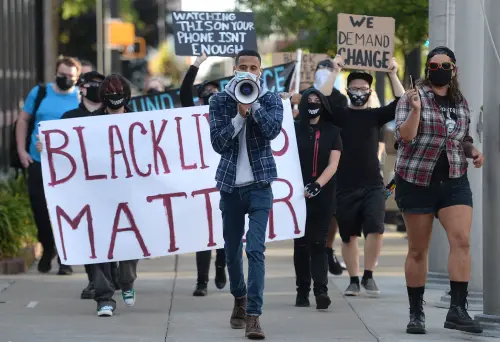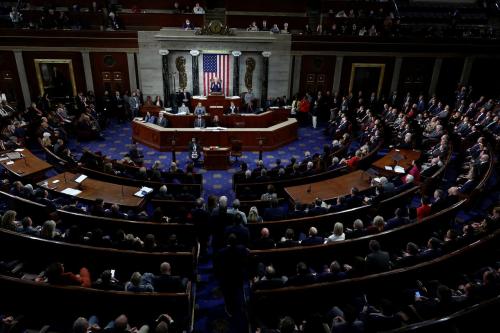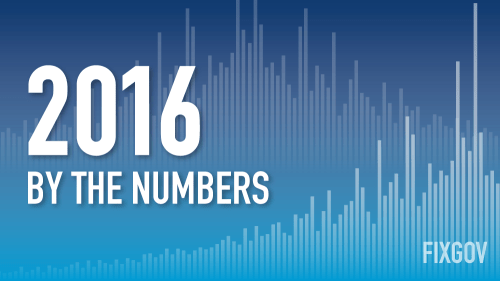As the presidential primary season gets underway, everyone knows that the Democratic Party has shifted to the left. What does this mean for the upcoming primaries? As new analysis from the Gallup Organization shows, some parts of the party have moved much farther than others, a reality that foreshadows a divide between the educated white elites of the party and its loyal African-American and Latino base.
Let’s begin with the topline results. Over the past two decades, a party with a plurality of self-identified moderates at the end of Bill Clinton’s second term is now dominated by liberals, and this shift makes a substantial difference. Democrats of all ideological stripes now agree on guns, global warming, the role of unions, and the need to increase corporate taxes. This doesn’t mean unity on all issues: liberal Democrats are far more likely than other Democrats to favor legalizing marijuana, ending the death penalty, and—significantly—a government takeover of our healthcare system. The early skirmishing over Bernie Sanders-style “Medicare for All” may develop into a major fault-line as the intra-party debate intensifies.
Race and education shape Democrats’ ideological self-identification, often in unexpected ways. For example, whites are far more likely to call themselves liberal than are African-Americans, with Hispanics in-between. The Gallup study divides the past 18 years into three 6-year tranches. The most recent tranche looks like this:
TABLE 1: DEMOCRATS’ IDEOLOGY BY RACE AND ETHNICITY, 2013-2018
| White | Black | Hispanic | |
| Liberal | 54% | 33% | 38% |
| Moderate | 33% | 40% | 36% |
| Conservative | 12% | 24% | 23% |
Today liberals outnumber moderates by more than 20 points among today’s white Democrats, and conservative white Democrats are an endangered species. By contrast, African-Americans are more likely to consider themselves moderate than liberal, and twice as likely as whites to call themselves conservative. These findings help explain why Sen. Bernie Sanders did disproportionately well among whites but overwhelmingly lost to Hillary Clinton among African-Americans.
In addition, white Democrats have shifted more in recent decades than the other groups. In the first Gallup tranche, the ideological breakdown looked like this:
TABLE 2: DEMOCRATS’ IDEOLOGY BY RACE AND ETHNICITY, 2001-2006
| White | Black | Hispanic | |
| Liberal | 34% | 25% | 29% |
| Moderate | 42% | 42% | 42% |
| Conservative | 21% | 30% | 27% |
Comparing Table 2 with Table 1, we see that during the years from Bush to Trump, the liberal share of whites rose by 20 points, compared to just 8 points for African-Americans and 9 points for Hispanics. We also see that African-Americans are about as likely to think of themselves as moderate as they were in 2001-2006.
Education matters as well. During the 18-year period Gallup studied, the share of Democrats with a BA or more rose from 27 percent to 35 percent. The bulk of the gains occurred among whites, where those with at least a four-year degree increased by 13 points, from 29 percent to 42 percent, compared to 3 points for African-Americans (from 21 to 24 percent) and just 1 point for Hispanics (19 to 20 percent).
Education is linked to ideological orientation. 58 percent of Democrats with BAs, and 65 percent of those with post-graduate degrees, regard themselves as liberal, compared to only 32 percent with a high school diploma or less.
One might conclude that ideological differences among racial and ethnic groups in the Democratic Party are driven by variations in educational attainment among these groups across time. It turns out, however, that race and ethnicity make a difference independent of education. Gallup provided me the following averages for the sixteen years 2003-2018:
TABLE 3: IDEOLOGICAL SELF-IDENTIFICATION, BY EDUCATION, RACE, AND ETHNICITY, 2003-2018
| BA or More | Less than a BA | |
| Liberal Share (%) | ||
| White | 68 | 43 |
| Black | 43 | 29 |
| Hispanic | 52 | 35 |
| Moderate Share (%) | ||
| White | 28 | 37 |
| Black | 42 | 40 |
| Hispanic | 34 | 37 |
| Conservative Share (%) | ||
| White | 4 | 18 |
| Black | 13 | 27 |
| Hispanic | 13 | 26 |
What stands out is that highly educated white Democrats are far more likely to self-identify as liberal than are African-Americans (or Hispanics) at equivalent levels of education. In fact, the 25-point gap between highly educated whites and highly educated African-Americans is identical to the gap between highly educated and less educated whites.
But doesn’t the emergence of millennials in the Democratic party change this picture? Not as much as one might expect. In the first place, the share of 18 to 29-year-olds in the party has risen by only 4 points, from 17 to 21 percent, in the period Gallup studied, while the share 50 and over has increased from 45 to 48 percent. And second, age cohorts don’t differ as much ideologically as they once did. The liberal share of Democrats 50 and older is 43 percent, compared to 49 percent for those 18 to 49—a modest 6-point gap. And the gender gap is even smaller: 47 percent of Democratic women are liberal, but so are 44 percent of Democratic men.
Nobody knows for sure what all this will mean for the Democratic primaries. But it seems reasonable to expect that white liberals such as Sanders, Elizabeth Warren, and Kirsten Gillibrand will do better among highly educated white voters than among highly educated black and Hispanics, or less educated whites. What this means on a state-by-state basis will depend on the demographic composition of each state’s Democratic primary electorate as well as the unfolding dynamics of the race.
One prediction seems safe: a candidate other than a white liberal who does well in mostly white Iowa or New Hampshire will be well-positioned to take advantage of less educated and more diverse electorates in the states—Nevada and South Carolina—that follow immediately afterward, and on Super Tuesday, which includes five southern states plus majority-minority California.







Commentary
How race and education are shaping ideology in the Democratic party
February 19, 2019